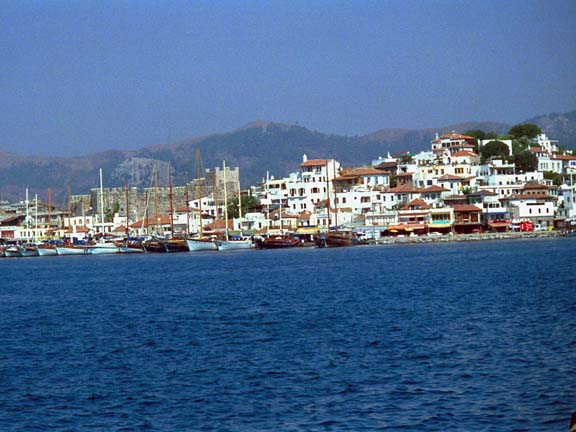
In 168 B.C. it was included within the re-established Lycian Federation. With the maritime commerce thriving, the city went beyond the borders of acropolis and was adorned with new structures. In 42 B.C. when the Roman Brutus besieged the city, the city folks, in the way their ancestors did centuries ago, set the city on fire in order to prevent the capturing of their women and children by the enemy and committed suicide. According to the story the Romans were touched by this event and they saved 150 people from those. In 41 B.C. Emperor Marcus Antonius encouraged the development of the city and Xanthos which earned the appreciation of the Roman Emperors during the Pax Romana epoch attained its heydays. The city became the episcopal centre during the Byzantine era. It was ruined and abandoned after the Arab raids following the 7th century A.D. Advancing through the village towards the north, the remains of the acropolis walls are seen. Climbing up from here one arrives at the agora of square plan. The obelisk/inscribed rock in the square is erected upon a great burial chamber. The epigraph is inscribed in the Luwian/Etruscan language and has a monolithic, prismatic structure. It has 250 lines and is inscribed on all four sides of the massive rock. It is about the heroic acts of Lycians in their war with the Persians. In the south of the square is the theatre of which the foundations were laid during the 2nd century A.D.. It was built as it appears today during the Lycian era. Opramoas, of Rhodiapolis, donated 30 thousand Denarii to the construction of the theatre. The caveas of the theatre with a seating capacity of 8 thousand are divided into two with a diazoma. There are 16 tiers at the lower and 4 tiers at the upper sections. The façade of the two-storeyed stage building is embellished with columns and reliefs. It has 5 stage doors on the lower floor. Immediately to the west of the theatre towering are two monumental tombs considered as the symbol of Xanthos, capital of Lycia. The first one of these is the Harpies Monument. It is in the form of a burial chamber placed upon a block stone rising upon a prismatic monolithic pillar, 8 m high. It is embellished with the reliefs of descriptions of the family of a Lycian hero, three men, women, pomegranade and siren. Their originals were smuggled to the British Museum in London and are on display in the hall of the same name there. The monument adjacent to this one is the stone podium and the Lycian type sarcophagus established upon a prismatic burial chamber, 5 m high. On the other side of the theatre the remains of a palace and water cisterns used to collect rainwater are noteworthy. The main upper part of the famous Nereid Monument is in the British Museum in London. The depiction of 12 dancing female Nereids in the reliefs gave this name to the monument. The city has two necropolises with lion’s figures. On the western side the second agora of the city and the remains of a basilica built during the Byzantine era are visible. Touristic canoeing and rafting tours are organized on the creek Eşen today.




No comments:
Post a Comment